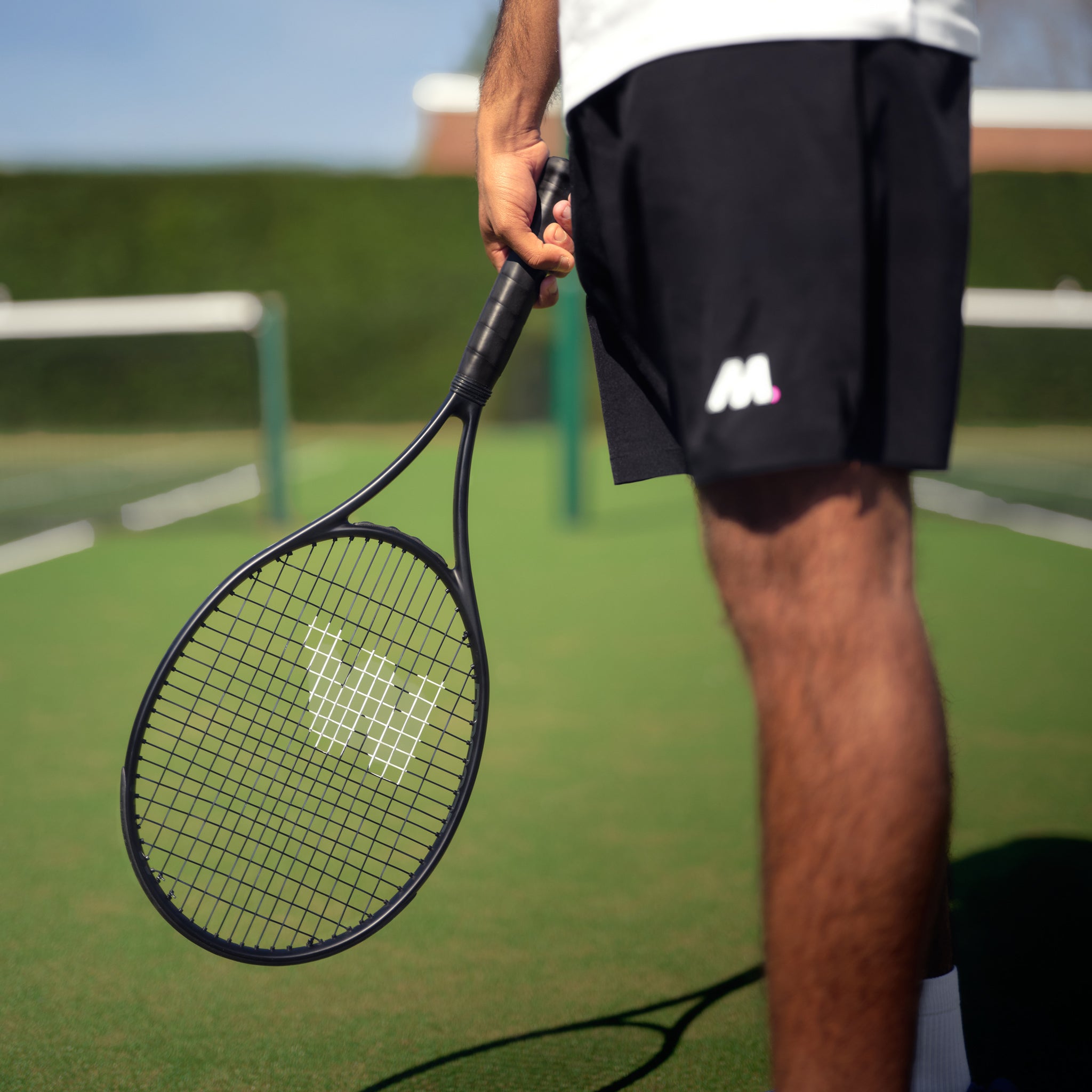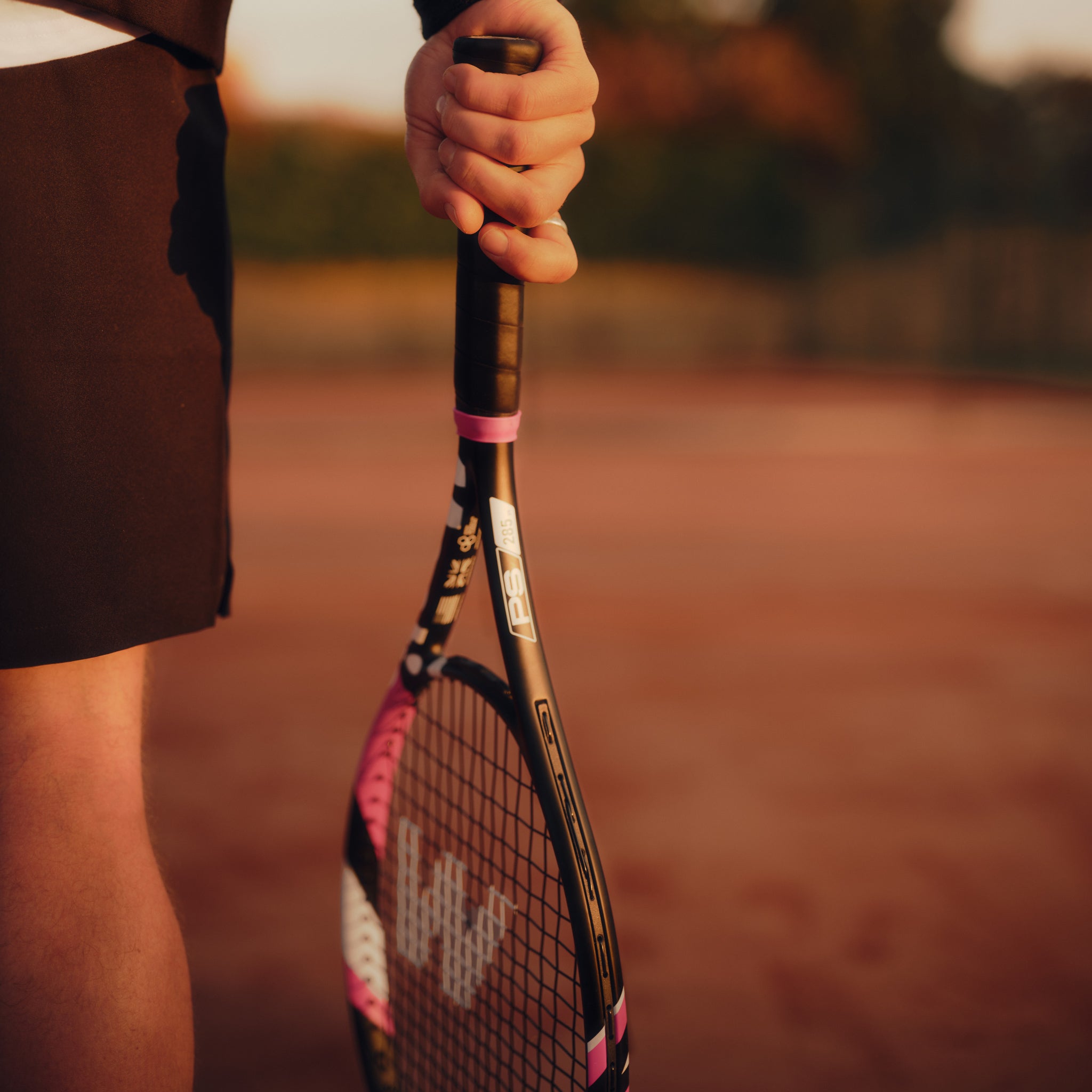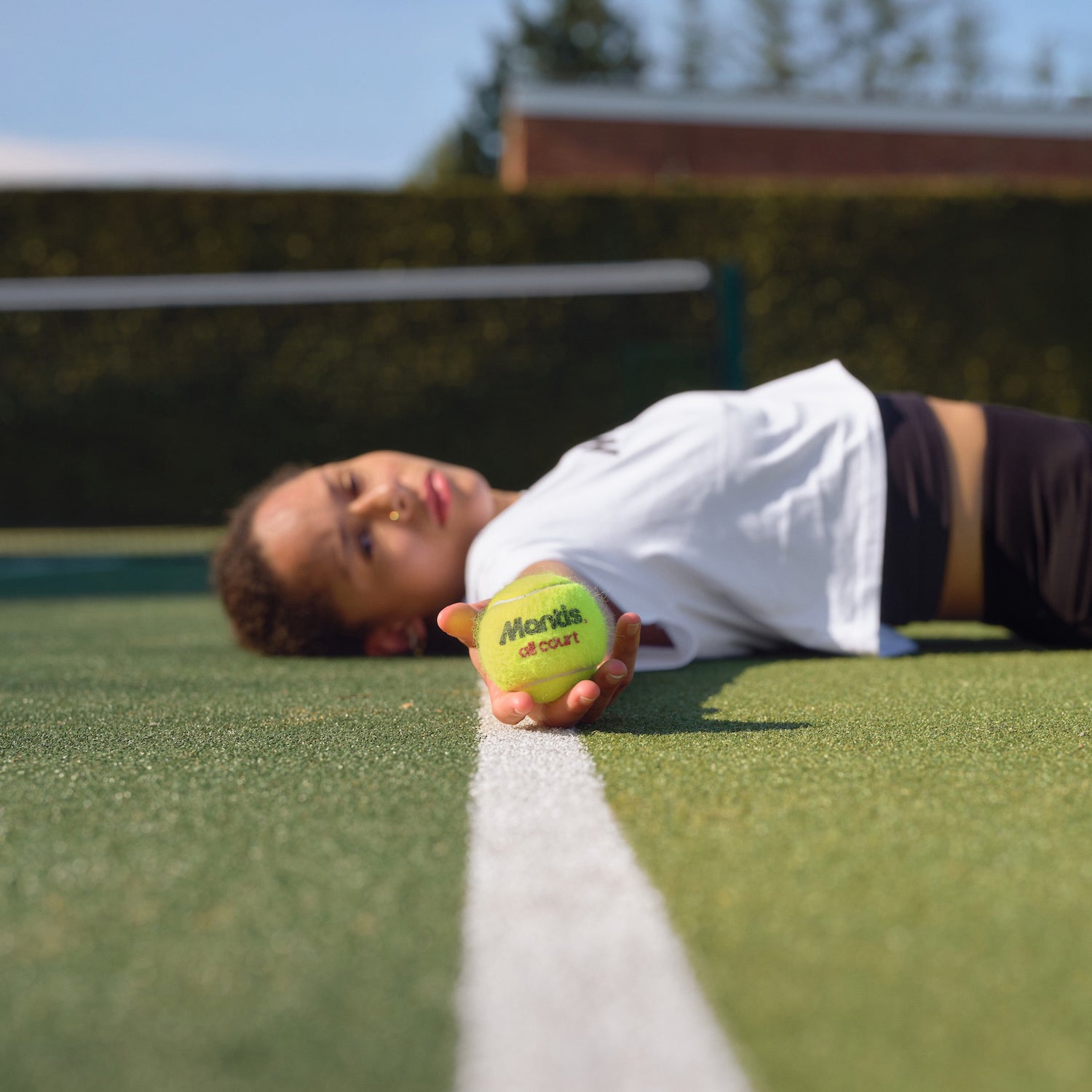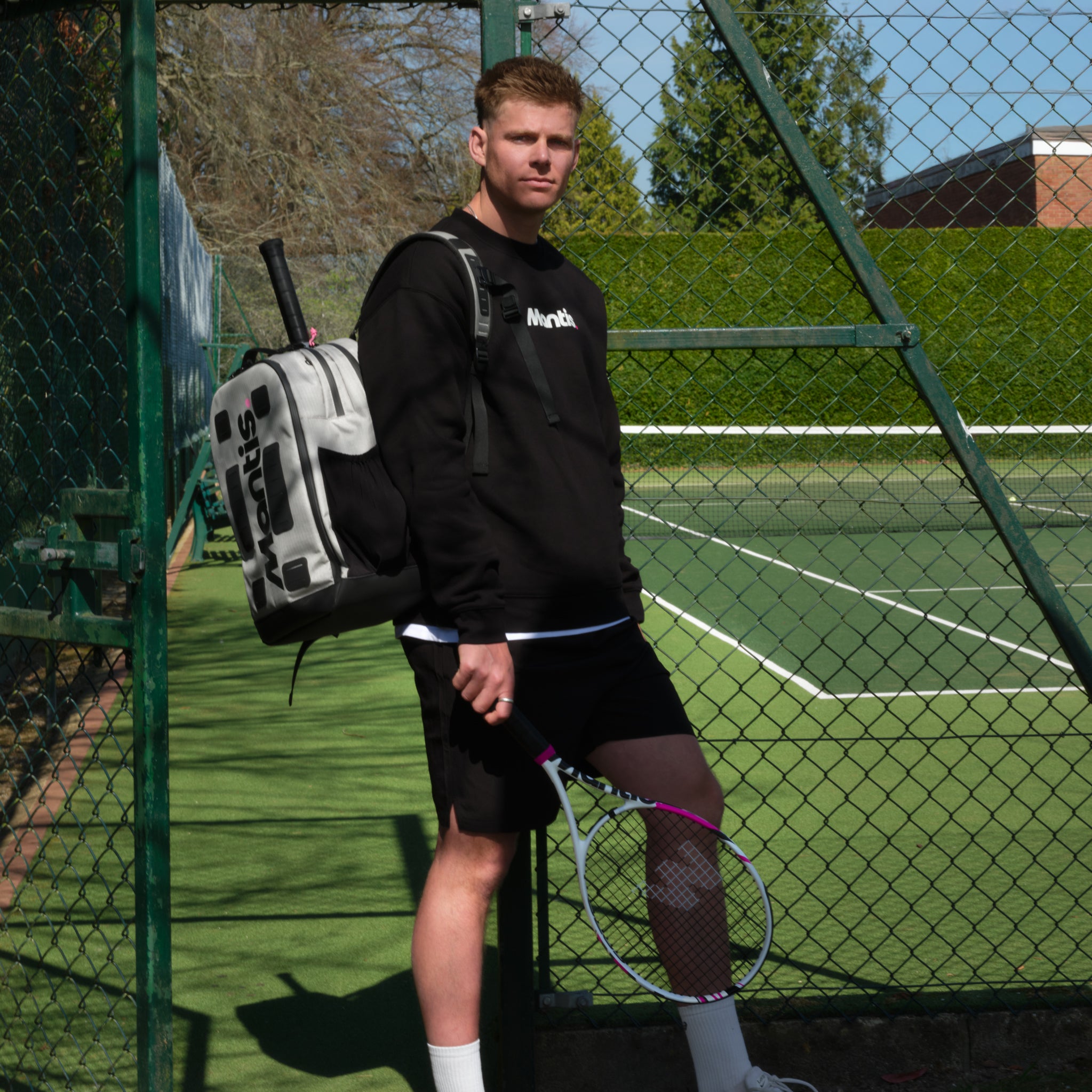
Online tennis lessons have completely changed the game for players wanting to get better. They give you a flexible, powerful way to get elite coaching and personalised feedback no matter where you are. It all comes down to video analysis—breaking down your technique frame by frame to build a stronger foundation and fix bad habits far more efficiently than just hitting on a court. At Mantis, this is exactly what we focus on: connecting you with expert guidance that fits your schedule, including our guide on tennis lessons for beginners.
A New Way to Develop Your Game
The traditional world of tennis coaching is definitely opening up. High-level instruction isn't just for players at exclusive clubs or fancy academies anymore. Technology has made it possible for anyone to get expert analysis and follow a structured training plan, kicking off a whole new era in player development. We see it as the perfect partnership, where these online tools work alongside, and even boost, your time on the court.
This modern approach gets rid of geographical limits. Suddenly, you can connect with top-tier coaches you’d probably never have access to otherwise. Just imagine getting your serve picked apart by a specialist on another continent, or being sent specific drills for your backhand while you're away on holiday. This is what improving your tennis looks like now.
Why Digital Coaching Has Taken Off
The main draw of online tennis instruction is its incredible flexibility and how easy it is to access. Players can now slot world-class coaching into their busy lives, instead of having to build their lives around a rigid lesson time. This convenience has been a massive part of its boom in popularity.
And the demand is definitely there. Since 2019, the UK has seen a 40% national increase in the demand for tennis lessons. Some cities, like Edinburgh, have seen that figure jump by a staggering 84%. This huge surge shows a growing love for the sport, and online platforms offer a practical way to meet that demand. It’s worth looking into the data to see just how much interest has spiked across the country.
Ultimately, online instruction puts you in the driver's seat of your own development. It gives you the tools to review your own technique whenever you want, see your mistakes clearly, and head to the court with a real purpose.
The Tools for Modern Training
Great online coaching isn’t just one thing; it’s a mix of different elements that come together to create a complete training experience. We believe in a system that combines smart analysis with practical, on-court action.
- Personalised Video Analysis: This is the heart of it all. When you record your strokes, a coach can give you frame-by-frame feedback, drawing right on the screen to show you exactly what needs to change.
- Structured Drills: After the analysis, you get drills designed specifically to fix your technical hitches and build better muscle memory.
- On-Demand Review: A live lesson is over the second you walk off the court. With online coaching, you can re-watch your analysis and feedback anytime you need a refresher.
This constant feedback loop is what makes online instruction so effective. You aren’t just getting a few tips; you’re getting a clear, actionable plan to get better. For any coaches thinking about building their own programmes, understanding the basics of creating and promoting online courses is a great starting point. Here at Mantis, we're dedicated to using these tools to help every player reach their full potential.
How To Choose The Right Online Tennis Platform
Finding the right online tennis instruction service can genuinely make or break your progress on the court. With so many options out there, it’s easy to get lost in slick marketing. You need to look past the sales pitch and focus on what will actually help you improve your game. A great primer on this is our guide on getting better at tennis, which really digs into the principles of consistent improvement.
At Mantis, we see a great platform as a true coaching partner. That's why our guide on tennis lessons for beginners stresses how a structured approach builds a strong foundation right from the start.
The technology behind the platform is a huge piece of the puzzle. High-quality video analysis isn’t just a nice-to-have; it’s essential. You want features that let a coach draw directly on your videos, show you a side-by-side comparison with a pro’s technique, and deliver feedback that’s crystal clear and easy to act on.
Evaluate Coach Expertise And Lesson Structure
Technology is only half the story. The quality of the coaching itself is what truly counts. Take some time to investigate the coaches' backgrounds and real-world experience. Are they former tour players? Or are they career coaches with a solid history of helping players just like you? Any platform worth its salt will be upfront about its coaching team.
You should also look closely at how the lessons are put together. Is there a clear path forward, or is it just a random library of tips and tricks? A well-organised curriculum that can be adapted to your specific goals—whether you're a tournament player fine-tuning your strategy or a total beginner trying to nail the basics—is infinitely more valuable.
The best online platforms don’t just point out your mistakes. They give you a clear, step-by-step roadmap to fix them. That structured feedback loop is where the real, lasting improvement comes from.
Comparing Online Tennis Instruction Platform Features
| Feature | Beginner Priority | Intermediate Priority | Advanced Priority |
|---|---|---|---|
| Video Analysis Tools | High | High | High |
| Coach Credentials | Medium | High | High |
| Structured Curriculum | High | Medium | Low |
| Personalised Drills | High | High | Medium |
| Quick Feedback Time | Medium | High | High |
| Community/Forums | Medium | Low | Low |
| Mobile App Usability | High | High | High |
This table should give you a better idea of what to prioritise. A beginner really needs that structured learning path, while an advanced player might be more focused on getting rapid, expert feedback on very specific aspects of their game.
Consider User Experience And Trial Periods
Finally, don’t overlook the simple user experience. The platform needs to be intuitive and straightforward. If you're struggling to upload a video or find your coach's comments, you'll quickly lose motivation to use it.
Here are a few practical things to check for:
- On-Court Convenience: Can you easily record a shot, upload it, and watch the feedback right there on your phone at the court?
- Feedback Speed: How long does it take to get a response after you submit a video? A quick turnaround is key to keeping your momentum going.
- Player Community: Are there forums or groups where you can connect with other players? Sometimes that extra bit of support and motivation makes all the difference.
Almost any reputable service will offer a trial period or some sort of money-back guarantee. We can't recommend this enough—take full advantage of it. There's simply no substitute for trying a platform for yourself to see if the coaching style, the tech, and the community feel right for you and your tennis goals. Think of it as an investment in your own development.
Setting Up Your Space for Optimal Learning
To really get the most out of online tennis coaching, you’ve got to get your practice environment right. A well-organised space, whether you’re on a proper court or just in the back garden, is the foundation for effective learning. It’s what allows your coach to give you the sharpest, most helpful feedback. At Mantis, we always tell our players that this setup is the most important first step, and we often walk them through how to arrange everything for the best results, as outlined in our guide on tennis lessons for beginners.
You don't need a lorry-load of gear to get started. Honestly, the basics are pretty simple. A smartphone with a decent camera is a must-have, obviously. But the single best accessory you can buy is a simple, adjustable tripod. It gives your coach a stable, consistent view and gets rid of that shaky, handheld footage that makes detailed analysis almost impossible.
This basic kit is often all you need to begin, but as players get more serious, many decide to invest in extra tools. You can see this trend in the growing market for tennis training supplies. It was valued at around USD 1.2 billion globally in 2024 and is expected to climb to USD 1.8 billion by 2033. This just shows how much demand there is for equipment that helps players improve, whether they're learning online or in person. You can discover more insights about the tennis equipment market to see where it's heading.
Positioning Your Camera for Perfect Analysis
Where you put your camera can make or break a remote lesson. It’s that important. Getting the right angles lets your coach see your technique from all sides, helping them spot those tiny issues with your grip, swing path, or footwork that would otherwise go unnoticed.
From our experience at Mantis, there are a few key positions that deliver the best feedback:
- Behind the Baseline: Set the tripod up directly behind you, right in the centre. This angle is golden for analysing your swing shape, where you're making contact, and your follow-through on groundstrokes.
- Side-On View: Place the camera parallel to the sideline, level with the baseline. This view is brilliant for checking your posture, how far you are from the ball, and the whole sequence of movements from your feet up.
- Serve Analysis Angle: For serves, pop the tripod at a 45-degree angle behind you, on the same side as your hitting arm. This gives the coach a crystal-clear look at your ball toss, trophy pose, and how you pronate through the hit.
Capturing multiple angles for each stroke gives your coach the complete picture. A few extra minutes of setup can lead to a breakthrough in your technical feedback.
Making Progress Without a Court
Don't fall into the trap of thinking every session needs to be on a full-sized court. One of the biggest perks of online coaching is its flexibility, and you can make massive improvements right at home with the right drills.
Find a small space in your garage, garden, or even a roomy part of the house. In these spots, you can focus purely on your mechanics and movement patterns without worrying about hitting the ball perfectly over the net.
- Shadow Swings: Use a mirror or your phone’s selfie camera to do slow-motion swings. This is a fantastic way to build muscle memory for any new technical tweaks your coach has given you.
- Footwork Drills: You don't need a court to work on your feet. Set up some cones or even just shoes as markers to practise your split-steps, recovery movements, and stance adjustments.
- Conditioning Exercises: Don't forget the fitness work! Core strength, flexibility, and agility workouts are things you can do anywhere, and they translate directly to more power and better balance on the court.
These sessions at home are the perfect way to reinforce what you're learning in your online tennis instruction, making sure every piece of advice sticks and turns into lasting improvement.
Turning Digital Feedback into On-Court Action
Getting expert analysis on your game is a huge step, but let's be honest—it’s only half the story. The real magic happens when you take that feedback from your screen and make it real on the court. It’s a process we’ve refined over years of coaching: create a solid feedback loop. You get the advice, you isolate one single change, you drill that new movement until it feels natural, and then you check your progress, a philosophy we also explore in our guide to getting better at tennis.
First things first, don't get overwhelmed. Your coach might send back a video with a handful of things to work on, and trying to tackle them all at once is a surefire way to get frustrated. Just pick one. The most important one. For example, if your coach points out that your racquet face is a little too open on your forehand, that’s it. That’s your entire mission for your next practice.
To get the most out of your online coaching, you’ll want to get comfortable with the tools of the trade. Understanding how to use asynchronous video tools makes a world of difference. These platforms are brilliant because they let you receive and review detailed, often frame-by-frame, analysis. You can watch your coach's feedback as many times as you need before you even pick up a racquet.
Isolating and Drilling a Specific Change
Let’s run with a real-world example. Say the feedback is about getting more topspin on your forehand by brushing up the back of the ball more aggressively. This is a classic for club players. The trick is to break it down into a simple, repeatable drill.
Don't just head to the baseline and start ripping forehands, hoping something clicks. You need a targeted exercise to build the right muscle memory.
- Mini-Tennis Topspin: Get up to the service line. Forget about power. Your only goal is to feel the racquet brushing up the ball, creating a loopy arc that easily clears the net.
- Drop-Feed Reps: Have a friend or a ball machine feed you nice, easy balls right in your strike zone. Focus entirely on that low-to-high swing path. Really exaggerate the feeling of lifting the ball with spin.
Remember, the point of these drills isn’t to hit winners. It’s all about consciously retraining your body. You're overwriting an old habit with a better one, and it’s supposed to feel a bit deliberate, even awkward, at the start.
Completing the Feedback Loop
Right, so you’ve spent a full session drilling that one technical change. Now it’s time to close the loop—this is the part that so many players skip, but it’s what actually cements the improvement.
You need to film yourself again. Hit the same shot (your forehand) from the exact same angle you sent in the first time.
This new video does two crucial things. First, it gives you the proof. You can literally pull up the old video and the new one side-by-side and see the difference for yourself. It’s incredibly motivating to see that you’re actually making the change your coach suggested.
Second, you send it back to your coach. Now they can see your progress, confirm you’re on the right track, and maybe give you a tiny refinement. Or, they’ll give you the green light to move on to the next priority. This simple cycle of analyse, drill, record, and repeat is what drives real, lasting improvement. It’s how you turn a piece of advice into a weapon on the court.
How to Track Your Progress and Stay Motivated
Let’s be honest, real improvement in tennis doesn’t happen overnight. It’s a long game, and keeping that fire lit is just as crucial as nailing your technique. With online lessons, you get feedback almost instantly, but translating that advice into muscle memory takes patience. You need a clear way to see how far you’ve come. At Mantis, we always encourage our players to set up simple tracking methods; it’s the best way to see the hard work paying off and stay hungry for the next session.
The trick is to stop relying on just "feeling" better on the court and start looking at tangible proof of your growth. This creates a powerful cycle: you see progress, which fuels your motivation to practise, which leads to more progress. A great primer on this is our guide on getting better at tennis, which really digs into the principles of consistent improvement.
Create a Training Journal
One of the best tools we’ve ever seen used is a simple training journal. It doesn’t have to be fancy—a basic notebook or a notes app on your phone works perfectly. After each session, just take five minutes to jot down a few thoughts.
This simple habit helps you really absorb the feedback from your coach. It makes you reflect on what you were trying to do and how it actually felt, which helps lock in that new muscle memory.
- Key Takeaways: What was the main thing you worked on? Maybe it was "keeping my head still on the serve toss."
- Feelings and Sensations: How did the new movement feel? It might have felt awkward at first, but did you have a moment where it just clicked? Write that down.
- Small Wins: Did you hit five slice backhands in a row for the first time? Note it! These little victories are huge for morale.
The Power of Visual Proof
Nothing shows progress quite like seeing it with your own eyes. This is where video coaching really comes into its own. Get into the habit of saving your initial "before" videos for every stroke you're working on.
After a few weeks of practice, film yourself hitting that same stroke again. When you put the two clips side-by-side, the technical changes are impossible to miss. You’ll spot the cleaner racquet path or the improved body rotation that you couldn't quite "feel" before.
This before-and-after comparison is the ultimate motivator. It’s concrete proof that your effort is turning into real, visible improvement, which is exactly what you need to push through those inevitable training plateaus.
Set Realistic and Specific Goals
Vague goals like "I want a better forehand" are a recipe for frustration because they’re impossible to track. Instead, work with your coach to set small, measurable targets. For example, a much better goal would be to increase your first serve percentage from 50% to 60% over the next month.
This gives your practice a clear purpose. You're not just mindlessly hitting balls anymore; you're working towards a specific, achievable target. This is especially important for younger players. In the UK, tennis is a top-ten sport for kids, with 8.4% of 5 to 16-year-olds playing in 2022/23. Setting clear, fun goals is the key to keeping them engaged and helping that enthusiasm last.
Got Questions About Online Tennis Lessons? We Have Answers
Thinking about taking your tennis game online? It's a smart move, but it's completely normal to have a few questions before you dive in. We get it. Players at all levels, from those just picking up a racquet to club tournament veterans, tend to ask us similar things. For a deeper look at the basics, our guide on tennis lessons for beginners is a great resource.
To help you get a clearer picture, we've tackled some of the most common queries we hear at Mantis about learning tennis in the digital age.
One of the biggest questions on people's minds is, "Can I really learn from scratch this way?" The answer is a resounding yes.
For beginners, an online platform can actually be a brilliant place to start. It gives you a structured way to learn the absolute fundamentals—grips, stances, and the core strokes—without feeling rushed or self-conscious in a group setting. You can watch and re-watch videos as many times as you need, getting solid feedback on your very first swings. This helps build a proper technical foundation from the get-go and stops bad habits from creeping in.
So, How Does Video Analysis Actually Work?
This is where the magic happens. Video analysis is the heart and soul of good online coaching, turning your smartphone into a seriously powerful training partner.
It's a straightforward process. You set up your phone on a tripod to get a steady shot, then record yourself hitting a particular stroke—say, a forehand or a serve. After you upload that clip, a qualified coach (or sometimes a sophisticated AI) will break it down for you. They’ll analyse your technique frame by frame, often using on-screen drawings, voice-overs, or even side-by-side comparisons with pros to pinpoint exactly what you need to work on.
The real game-changer is the personalised feedback. This isn't just a generic tip you could find anywhere. It's highly specific advice, paired with drills designed to fix your unique technical quirks.
What Gear Do We Genuinely Need?
You can relax—you don’t need to buy out the local sports shop to start. The list of essentials is refreshingly simple.
- The Obvious Stuff: Your racquet, a few tennis balls, and a court or even just a practice wall.
- The Tech: A smartphone with a decent camera is your key tool for recording your sessions.
- The One Essential Extra: We can't recommend a cheap tripod enough. It keeps your phone perfectly still, giving your coach a clear and consistent view of your technique. This is absolutely vital for a proper analysis.
You can always add more training aids down the line, but they aren't necessary to see significant improvement right away.
How Often Should We Practise to See a Difference?
When it comes to improvement, consistency trumps intensity every single time. To see real, noticeable progress, aim to engage with your online coach or platform at least once or twice a week.
This doesn't mean you need to grind it out for hours every day. A fantastic routine is to have one session where you focus on recording your strokes for feedback. Then, schedule two separate, shorter sessions dedicated purely to implementing the drills your coach gives you. The beauty of online learning is its flexibility; you build a schedule that fits your life. This focused cycle of feedback and practice is a proven recipe for fast, sustainable improvement.
At Mantis, we create equipment for players who are serious about that process of improvement. Our racquets and gear are engineered with precision to help you translate every piece of expert advice into a stronger, more reliable game on the court. Check out our collection at https://mantissport.com.








